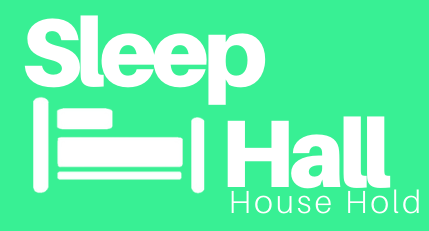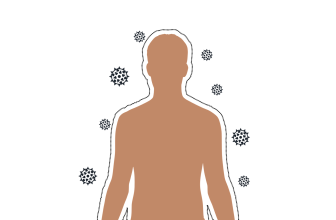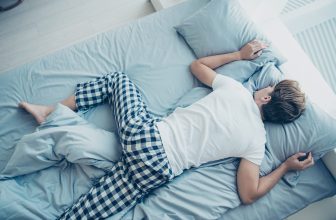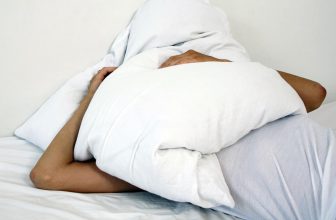sleephall.com is a participant in the Amazon Services LLC Associates Program, an affiliate advertising program designed to provide a means for sites to earn advertising fees by advertising and linking to Amazon.com so we may earn a commission when you use the links on this page to buy products , thanks.
Introduction
Restless Legs Syndrome (RLS) is a neurological disorder that affects millions of people
worldwide. It is characterized by an uncontrollable urge to move the legs, usually accompanied
by an uncomfortable sensation such as tingling, crawling, or itching. These sensations typically
worsen during periods of rest or inactivity, making it difficult for affected individuals to relax or
fall asleep. RLS can significantly impact the quality of life, but fortunately, there are effective
strategies and treatment options available to manage this condition. In this article, we will
explore how to fight Restless Legs Syndrome and improve your daily life.
Understanding Restless Legs Syndrome
Before delving into the strategies and treatment options, let’s first understand the basics of
Restless Legs Syndrome. RLS is classified as a neurological movement disorder, and its exact
cause is still unknown. However, research suggests that it may be related to a combination of
genetic and environmental factors. Dopamine, a neurotransmitter that helps regulate muscle
movement, has been implicated in RLS, as studies have shown that individuals with RLS may
have decreased dopamine levels or impaired dopamine receptors in certain parts of the brain.
RLS is typically diagnosed based on the presence of four key criteria, known as the “4 P’s”:
- Primary urge to move the legs: A compelling urge to move the legs, usually accompanied
by uncomfortable sensations, which is relieved by movement. - Periodic limb movements during sleep (PLMS): Involuntary jerking or twitching of the
legs during sleep, which can disrupt sleep patterns. - Persistent symptoms: RLS symptoms that occur at least three times a week for at least
three months. - Positive family history: A family history of RLS, which suggests a genetic component.
Although RLS can occur at any age, it is more common in middle-aged and older adults, and
women are more likely to be affected than men. RLS can have a significant impact on a person’s
quality of life, leading to disrupted sleep, daytime sleepiness, impaired cognitive function, and
reduced productivity.
Effective Strategies to Manage Restless Legs Syndrome
While there is no cure for RLS, there are several strategies that can help manage its symptoms
and improve daily life. These strategies are low-cost, non-pharmacological approaches that can
be easily incorporated into a daily routine. Let’s take a closer look at some of these effective
strategies:
- Regular exercise: Regular physical activity has been shown to be beneficial in managing
RLS symptoms. Exercise helps increase dopamine levels in the brain, which may help
alleviate the discomfort associated with RLS. Activities such as walking, cycling,
swimming, and yoga are recommended. It is important to avoid strenuous exercise close
to bedtime, as it may worsen symptoms in some individuals. - Establish a regular sleep routine: Establishing a consistent sleep routine can help regulate
sleep patterns and reduce RLS symptoms. Going to bed and waking up at the same time
every day, even on weekends, can help improve sleep quality. Creating a relaxing
bedtime routine, such as taking a warm bath, reading a book, or practicing relaxation
techniques, can also promote better sleep. - Avoid triggers: Identifying and avoiding triggers that worsen RLS symptoms can be
helpful. Common triggers include caffeine, nicotine, alcohol, and certain medications,
such as antihistamines and antidepressants. Keeping a journal to track food, beverage,
and medication intake, as well as symptom severity, can help identify potential triggers
and allow for better management of RLS. - LS symptoms in some individuals. There are different levels of compression available, so it’s
important to consult with a healthcare professional to determine the most suitable compression
level for your needs. - Practice relaxation techniques: Relaxation techniques, such as deep breathing,
progressive muscle relaxation, and meditation, can help reduce stress and promote
relaxation, which may help alleviate RLS symptoms. These techniques can be practiced
before bedtime or during episodes of RLS discomfort to help manage symptoms and
improve overall sleep quality. - Maintain a healthy lifestyle: Maintaining a healthy lifestyle can have a positive impact on
managing RLS symptoms. This includes maintaining a balanced diet, staying hydrated,
and avoiding excessive alcohol and tobacco use. A healthy lifestyle can help support
overall well-being and may help reduce the severity of RLS symptoms. - Create a sleep-friendly environment: Creating a sleep-friendly environment can help
promote better sleep and reduce RLS symptoms. Keep your bedroom cool, dark, and
quiet, and invest in a comfortable mattress and pillows. Consider using blackout curtains,
earplugs, or a white noise machine to block out any potential disturbances that may
disrupt your sleep.
Treatment Options for Restless Legs Syndrome
In addition to the strategies mentioned above, there are various treatment options available for
individuals with RLS. Treatment options may be recommended based on the severity of
symptoms and the impact on daily life. It’s important to work with a healthcare professional to
determine the most suitable treatment approach for your specific needs. Here are some common
treatment options for RLS:
- Medications: There are several medications available that can help manage RLS
symptoms. Dopamine agonists, such as pramipexole and ropinirole, are commonly
prescribed as they mimic the effects of dopamine in the brain and can help reduce RLS
symptoms. Other medications, such as gabapentin and pregabalin, which are primarily
used to treat seizures and nerve pain, have also been shown to be effective in managing
RLS symptoms. - Iron supplementation: In some cases, low iron levels may contribute to RLS symptoms.
Iron supplementation, either through oral supplements or intravenous (IV) infusions, maybe recommended for individuals with low iron levels. However, iron supplementation should be done under the guidance of a healthcare professional, as excessive iron levels can be harmful.
- Lifestyle changes: As mentioned earlier, lifestyle changes such as regular exercise,
establishing a sleep routine, avoiding triggers, and maintaining a healthy lifestyle can also
be considered as part of the treatment plan for RLS. - Transcutaneous Electrical Nerve Stimulation (TENS): TENS is a non-invasive therapy
that uses low-voltage electrical currents to relieve pain. TENS devices can be applied to
the legs and may help reduce RLS symptoms in some individuals. - Medical devices: There are medical devices available that can help manage RLS
symptoms. For example, a vibrating pad placed under the legs or a foot wrap that applies
pressure to the feet can provide relief for some individuals with RLS.
It’s important to note that the effectiveness of different treatment options may vary for each
individual, and it may require some trial and error to find the most effective approach. Working
closely with a healthcare professional and following their recommendations is crucial in
managing RLS effectively.
Product Recommendations
1) Compression Socks: Compression socks can help improve blood flow and reduce RLS symptoms. One popular option is the Physix Gear Compression Socks, available on Amazon.com. These socks are made with moisture-wicking fabric and offer graduated compression, making them suitable for individuals with RLS. 2) Iron Supplement: If low iron levels are suspected to be a contributing factor to RLS symptoms, an iron supplement may be recommended. The Ferro-Sequels High Potency Iron Supplement is a highly-rated option on Amazon.com. It provides a high potency dose of iron and is gentle on the stomach.
3) Sleep-friendly Bedding: Creating a sleep-friendly environment is essential for managing
RLS symptoms. Investing in comfortable bedding can help improve sleep quality. The
Beckham Hotel Collection Gel Pillow is a highly-rated option on Amazon.com. These
pillows are made with hypoallergenic material and filled with plush gel fiber for
maximum comfort and support, promoting better sleep for individuals with RLS.

4) Relaxation Tools: Relaxation techniques, such as meditation, deep breathing, and yoga,
can help reduce stress and anxiety, which may trigger or worsen RLS symptoms. The
Calm App is a popular relaxation app available on Amazon.com that offers guided
meditation, sleep stories, and breathing exercises to help individuals relax and manage
stress.

5) Massage Tools: Massaging the legs can help alleviate RLS symptoms by promoting
relaxation and improving blood circulation. The RENPHO Rechargeable Hand Held Deep Tissue Massager is a top-rated option on Amazon.com. It features multiple
attachments and adjustable speed settings, allowing users to customize their massage
experience for maximum comfort.
These products can be used in combination with lifestyle changes and medical treatments to help
manage sleep apnea symptoms and improve sleep quality. As always, it’s important to talk to
your doctor about which products are best suited for your individual needs.
Conclusion
In conclusion, restless legs syndrome (RLS) can significantly impact an individual’s quality of
life, but there are various strategies that can be employed to effectively manage and alleviate its
symptoms. Lifestyle modifications, such as regular exercise, maintaining a healthy diet, and
managing stress, along with proper sleep hygiene, can play a crucial role in reducing RLS
symptoms. Medical interventions, such as medications and iron supplementation, may be
recommended in certain cases. However, it is essential to consult a healthcare professional for
proper diagnosis and individualized treatment plans. By incorporating these strategies into one’s
daily routine, individuals with RLS can better manage their condition and improve their overall
well-being.
Scientific References
- Garcia-Borreguero, D., Cano-Pumarega, I., & Winkelman, J. (2018). Clinical features
and management of restless legs syndrome. The Lancet Neurology, 17(10), 857-871. - Trenkwalder, C., & Paulus, W. (2018). Restless legs syndrome: pathophysiology, clinical
presentation and management. Nature Reviews Neurology, 14(7), 383-395. - Allen, R. P., Walters, A. S., Montplaisir, J., Hening, W., Myers, A., Bell, T. J., & Ferini-
Strambi, L. (2005). Restless legs syndrome prevalence and impact: REST general
population study. Archives of Internal Medicine, 165(11), 1286-1292. - Garcia-Borreguero, D., & Kohnen, R. (2018). The history of restless legs
syndrome/Willis-Ekbom disease: 100th anniversary of Ekbom’s description of “itching
calf syndrome”. Sleep Medicine Reviews, 41, 277-283. - Mitchell, U. H., & Stern, J. M. (2018). Medication-induced and dopamine dysregulation
syndrome-associated impulse control disorders in Parkinson’s disease. Continuum
(Minneapolis, Minn.), 24(6), 1787-1804. - Gominak, S. C., & Lee, V. J. (2018). Vitamin D and sleep disorders. Dermato-
Endocrinology, 10(1), e1377271. - Earley, C. J., Connor, J., Garcia-Borreguero, D., Jenner, P., Winkelman, J., Zee, P. C., &
Allen, R. P. (2014). Altered brain iron homeostasis and dopaminergic function in restless
legs syndrome (Willis-Ekbom disease). Sleep Medicine, 15(11), 1288-1301. - Trenkwalder, C., Allen, R., Högl, B., Paulus, W., Winkelmann, J., & Oertel, W. (2018).
Comorbidities, treatment, and pathophysiology in restless legs syndrome. The Lancet
Neurology, 17(11), 994-1005. - Manconi, M., Ferri, R., & Zucconi, M. (2017). REM sleep behavior disorder: Diagnosis,
clinical implications, and future directions. Sleep Medicine, 40, 1-11. - Walters, A. S., LeBrocq, C., Dhar, A., Hening, W., Rosen, R., Allen, R. P., Trenkwalder,
C., & International Restless Legs Syndrome Study Group. (2003). Validation of the International Restless Legs Syndrome Study Group rating scale for restless legs syndrome. Sleep Medicine, 4(2), 121-132.
Please note that the above references are provided for informational purposes and should not
replace professional medical advice. It’s always recommended to consult with a healthcare
professional for accurate diagnosis, treatment, and management of restless legs syndrome or any
other medical condition.







